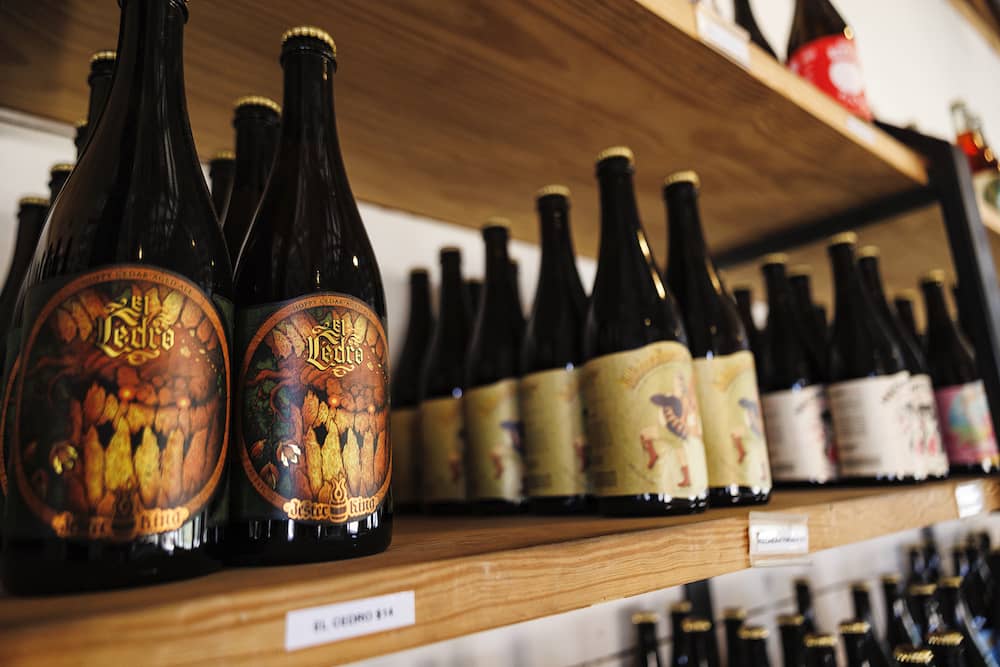Seawall Bar: The Very Best Drinks with an Ocean Sight in Galveston
Seawall Bar: The Very Best Drinks with an Ocean Sight in Galveston
Blog Article
The Ultimate Distillery Experience: From Grain to Glass, Everything You Need to Know
Embarking on a journey via the ins and outs of the distillery process reveals a world where science meets artistry in the creation of spirits. From the mindful choice of grains to the meticulous crafting of each container, every action in the production line plays an essential role in shaping the last item that enhances our glasses.
The Art of Grain Option
Selecting the ideal grains is an important step in the distillation process, identifying the taste account and high quality of the end product. The sort of grain selected dramatically influences the character of the spirit being produced - Breweries in Galveston Texas. Usual grains used in purification consist of barley, corn, rye, and wheat, each imparting distinct tastes and characteristics to the final item

Beyond flavor considerations, the high quality and purity of the grains are paramount. Distillers carefully resource grains to guarantee they are without impurities and possess the essential starch content for fermentation. By grasping the art of grain choice, distillers lay the foundation for producing extraordinary spirits that mesmerize the taste.
Purification Refine Demystified
Having actually developed the foundation with meticulous grain selection, the purification procedure becomes the transformative phase where the significance of the picked grains is opened and improved into a perky type. Distillation is a methodical procedure that relies on the concept of separating alcohol from a blend based on differences in boiling points. When the fermented mash is heated up in the still, the alcohol evaporates at a reduced temperature than water and other substances, permitting its extraction. As the alcohol vapors pass and climb with the still, they condense back into liquid form, leading to a greater evidence distillate. This distillate, likewise referred to as the 'heart cut,' is the purest and most preferable part of the purification run. The procedure doesn't finish there; multiple purification runs or extra actions such as aging in barrels may even more refine the spirit, enhancing its personality, intricacy, and flavor. Understanding the details of the purification procedure is crucial for producing premium spirits that captivate connoisseurs and fanatics alike.
Barrel Aging and Taste Growth
Throughout the barrel aging procedure, spirits undertake a transformative trip as they interact with the timber, taking in nuanced flavors and establishing an abundant intricacy. As spirits age in the barrels, they extract compounds such as vanillin, lignin, and tannins from the timber, adding to the development of aromas like vanilla, caramel, flavor, and also tips of toasted oak.
Furthermore, the aging process enables oxidation to occur, bring about more chemical responses that mellow the spirit and complete any rough sides. The permeable nature of timber likewise enables the spirit to breathe, facilitating the integration of flavors with time. Depending upon more helpful hints the duration of aging and ecological problems like temperature level and moisture, spirits can acquire different attributes, from refined wood notes to deep, intricate flavors that make each set one-of-a-kind. Inevitably, barrel aging plays a pivotal function fit the unique taste profile of each spirit, supplying a sensorial journey for lovers to appreciate.
Craftsmanship in Bottling and Classifying
As spirits reach their optimal flavor accounts with barrel aging, the precise craftsmanship in bottling and identifying ends up being the next essential action in providing a costs product to consumers. The process of classifying and bottling is a crucial facet of the overall distillery experience, as it is the last touchpoint prior to the item reaches the hands of customers (Distillery in Galveston). Workmanship in bottling entails ensuring that each container is filled specifically with the spirit, taking into consideration variables such as consistency in fill levels and the prevention of any type of contaminations going into the container

Tasting and Valuing Fine Spirits
To fully value fine spirits, one have to engage all the detects in a purposeful and mindful tasting experience. When sampling penalty spirits, it is essential to start by observing the spirit's look. Note the color, clearness, and viscosity of the fluid in the glass. Swirl the spirit see here gently to release its aroma. The nose is an important sense in sampling spirits; take a moment to inhale the complex scents deeply. Next off, take a small sip and let it linger on your taste buds. Focus on the various tastes that unravel - from fruity and sweet notes to spicy or smoky undertones. Think about the mouthfeel, noting if the spirit is smooth, velvety, or fiery. Swish the spirit in your mouth to totally experience its appearance and taste. Swallow gradually and appreciate the remaining finish. Great spirits usually leave an enjoyable aftertaste visit this site right here that can disclose even much more concerning the craftsmanship and top quality of the drink. By engaging all your detects in this fashion, you can absolutely appreciate and appreciate the complexities of fine spirits.
Verdict
To conclude, the distillery experience incorporates the intricate art of grain option, the specific purification procedure, the transformative barrel aging, the careful craftsmanship in identifying and bottling, and the advanced method of sampling and appreciating great spirits. Each action in the manufacturing process plays a vital function in producing high-quality spirits that mesmerize the senses and pleasure lovers worldwide.
The kind of grain picked considerably influences the character of the spirit being created. By mastering the art of grain option, distillers lay the structure for developing remarkable spirits that captivate the taste buds.

Report this page